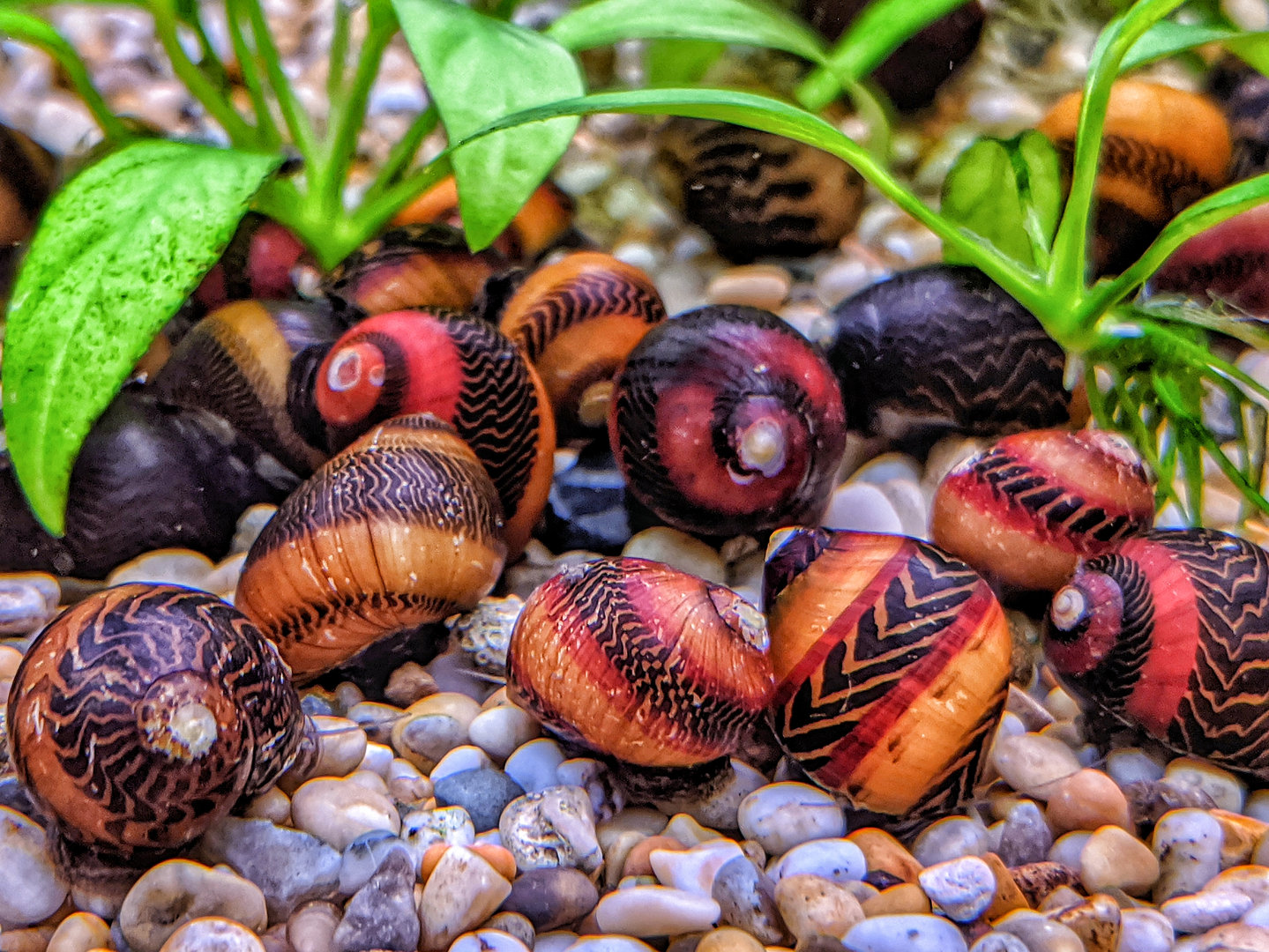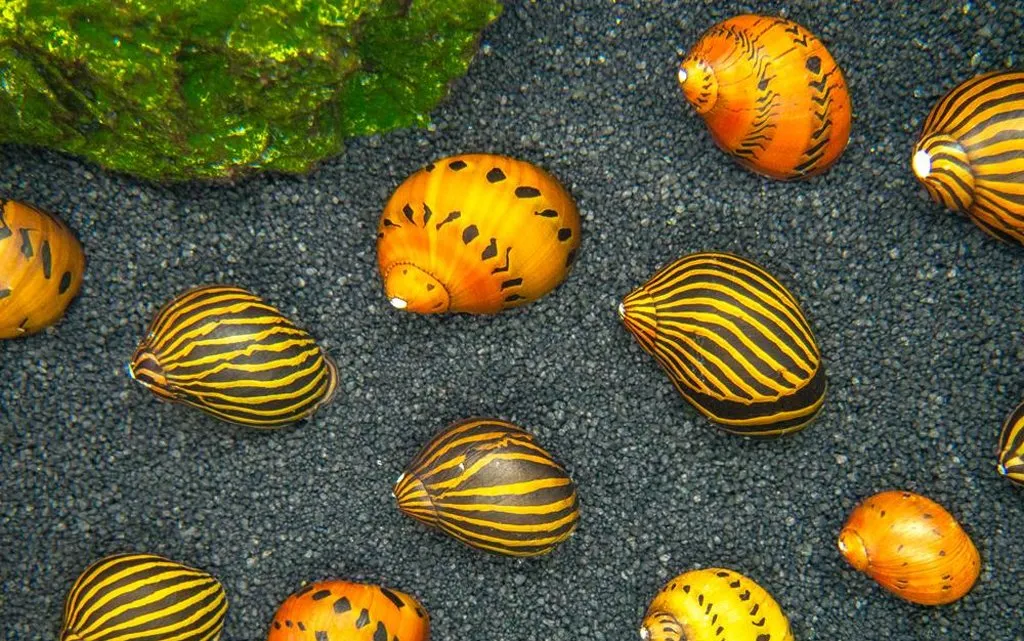Nerite snails are a popular choice among marine aquarium enthusiasts for their ability to control algae growth and add a unique visual element to saltwater tanks. This guide will delve into the care, benefits, and tips for maintaining these intriguing creatures in a saltwater aquarium setting.
Understanding Nerite Snails
What Are Nerite Snails?
Nerite snails, particularly marine nerite snails, are small, freshwater or saltwater gastropods known for their algae-eating capabilities. They are widely recognized for their distinctive shell patterns and colors, which can vary from zebra stripes to polka dots.
Types of Nerite Snails
There are several species of nerite snails that can thrive in saltwater aquariums. Among them are:
- Zebra Nerite Snail: Named for its black and gold striped shell.
- Tiger Nerite Snail: Distinguished by its orange and black striped shell.
- Olive Nerite Snail: Notable for its dark, olive-colored shell with subtle patterns.
Each type of nerite snail contributes differently to the aquarium environment and requires slightly different care.
Benefits of Nerite Snails in Saltwater Aquariums
Algae Control
One of the primary benefits of nerite snails is their efficiency in controlling algae growth. They consume various types of algae, including green and brown algae, which helps to maintain a clean and healthy tank environment.
Low Maintenance
Nerite snails are relatively low maintenance compared to other tank inhabitants. They do not require special feeding and can thrive on the natural algae present in the aquarium. This makes them an ideal choice for both beginner and experienced aquarists.
Tank Cleanliness
In addition to algae control, nerite snails contribute to the overall cleanliness of the tank by consuming detritus and organic debris. Their scavenging behavior helps to reduce the buildup of waste materials, contributing to a healthier aquatic environment.
Care Requirements for Nerite Snails

Tank Conditions
To ensure the well-being of nerite snails, certain tank conditions must be met:
- Salinity: Maintain a salinity level between 1.023 and 1.025 specific gravity.
- Temperature: Optimal temperature ranges from 72°F to 78°F (22°C to 26°C).
- pH Levels: Aim for a pH level between 8.1 and 8.4.
Feeding
While nerite snails primarily feed on algae, it may be beneficial to supplement their diet with algae wafers or other algae-based foods, especially in tanks with low algae levels.
Compatibility
Nerite snails are generally peaceful and can coexist with a variety of other marine species. However, avoid housing them with aggressive or predatory fish that might disturb or harm them.
Tips for Successful Nerite Snail Care
Regular Tank Maintenance
Maintaining optimal tank conditions is crucial for the health of nerite snails. Regular water changes, monitoring of salinity and pH levels, and cleaning of the aquarium will help ensure a suitable environment for your snails.
Monitoring for Health Issues
Keep an eye out for any signs of health issues in your nerite snails, such as unusual behavior or changes in shell appearance. Address any potential problems promptly to prevent them from escalating.
Preventing Escape
Nerite snails are known to be escape artists. Ensure that your aquarium has a secure lid to prevent them from climbing out of the tank.
Common Questions About Nerite Snails

How Long Do Nerite Snails Live?
Nerite snails typically have a lifespan of 1 to 3 years in a well-maintained saltwater aquarium. Their longevity can be influenced by tank conditions and overall care.
Can Nerite Snails Reproduce in a Saltwater Tank?
Nerite snails can reproduce in saltwater aquariums, but their eggs usually do not hatch in marine environments. This is beneficial for aquarists who want to avoid an overpopulation of snails.
What Do I Do If My Nerite Snail Stops Moving?
If a nerite snail becomes inactive, check the tank conditions and ensure they are within the optimal range. Low salinity, poor water quality, or inadequate food sources can contribute to reduced activity.
Conclusion
Nerite snails are valuable additions to saltwater aquariums, offering both practical benefits and aesthetic appeal. By understanding their needs and maintaining proper tank conditions, aquarists can enjoy the advantages these snails bring to their marine environments. Whether you are new to marine aquariums or a seasoned enthusiast, incorporating nerite snails into your setup can contribute to a healthier and more vibrant aquatic habitat.

